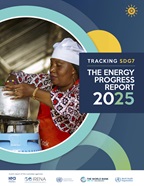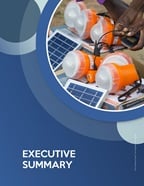
Health science and policy summaries
Concise overviews of current evidence on air quality, energy access, climate change, and health
Highlights

Concise overviews of current evidence on air quality, energy access, climate change, and health

WHO invites governments, agencies and organizations to pledge voluntary actions to reduce the health impacts of air pollution by 50% by 2040.
.jpg?sfvrsn=d51a0bea_8)
Stop polluting the air we breathe – prevent diseases and save lives
/country-readiness-strengthening-(crs)/community-readiness-and-resilience-(crr)/beat-the-heat-banner-cropped.jpg?sfvrsn=a5bbb703_3)
Initiative against extreme heat and related environmental health risks in workplaces and major events
News
All →Factsheets
All →Calls For
All →WHO, as the coordinating authority on international health, supports countries in protecting public health through evidence-based policies and actions....
Exposure to air pollution and its associated health impacts are affected by land use practices including their regulation and enforcement. Understanding...
Exposure to green spaces is widely associated with health benefits, including mental (e.g. reduced risk of depression and anxiety), physical (e.g. improved...
Sand and dust storms (SDS) result from turbulent winds that raise large quantities of particles from the ground into the air in emission areas. Emission...

Tracking SDG 7: The Energy Progress Report 2025 finds that almost 92% of the world’s population now has basic access to electricity. Although this...

The Energy Progress Report 2025 finds that almost 92% of the world’s population now has basic access to electricity Although this is an...

The directory is an online repository with more than 200 open access resources and tools updated on a regular basis that provide information on the importance...

The WHO Air Quality, Energy and Health Science and Policy Summaries (SPS) provide concise overviews of current knowledge and evidence on topics related...
Multimedia
All →VGS How did you get to work today? Did you walk? Ride a bike? Take public transportation? We are here in the city of Cape Town and we're going to talk about transportation of the future. Is it possible to make it greener, safer, healthier for you and the planet? Here to talk about it is Dr. Etienne Krug. Welcome, Etienne, talk to us about challenges to greener, sustainable transportation in cities. What is the scale of the challenge and the problem?
EK Today, more than half of the world's population already lives in cities. And we expect that by 2050 that will be two thirds of the world population. This brings cities huge challenges, as well as opportunities for improvement. For transportation, it means that we have more cars and more people on the road, leading to congestion, to pollution, often also stress. So there's a lot of challenges coming from unsustainable transport, but we can make our transport sustainable, the transport of the future. It should look like a city where we can walk, cycle, use public transportation and get anywhere to work, to school, to the store in 10, 15, 20 minutes so that, you know, it's much more manageable. And as a result of that, we'll have less non-communicable diseases because we will be moving more, we will be breathing less polluted air we will feel better, our mental health will be improved and road deaths will go down.
VGS Etienne, Is that even possible? These cities of the future, if you grow up or if you live right now in a big metropolitan city, it almost seems impossible right? And yet there are more than 70 cities that are actually working towards this future, this greener, more sustainable future. Talk to us about it.
EK It is totally possible. For example, Mexico has made huge efforts to promote cycling, gaining back lanes from roads in order to favor safe cycling. because not only about putting more bicycles on the road, it’s also to make it safe. In Cali, Colombia, there's bicycle doctors who repair bikes for free in order to promote it. Pontevedra in Spain has banned cars from the city center to promote walking and cycling. Milan has made a huge bicycle network, it’s still being developed. Many countries and cities are also tackling speed around schools. in Lusaka, for example, after, I think 12 or so children had died on the way to school because there were simply no safe walking routes for children to school. Speed was reduced to 30 kilometers per hour around school with immediate results in saving lives. So there are plenty of examples of cities moving forward because they know it's the healthy and the green and the best way for all.
VGS So Etienne, we hear about people reclaiming cities, cities creating greener, healthier spaces. Talk to us about the cost of not acting.
EK The cost of not acting. Its basically continuing in the direction that many cities are still taking, which is traffic jams, congestion, pollution and death and injury and disability on the road. It's a price we do not want to pay and we do not have to pay because this is not the city of the future. We know that these interventions are cost effective. Speed bumps. One of the most simple road safety interventions have also been labelled as one of the most cost effective public health, in general, interventions. Showing that, you know, by acting on speed and on road safety in general, we are improving health.
VGS Etienne, what can people do to keep themselves safe and healthy in their own transport choices?
EK We still have cities where it is unsafe to use these active modes of transportation. In that case, I think it's important people demand action from their policymaker actions to have the right legislation in place in terms of speed, drunk driving, use of helmets, etc. But also that the legislation is enforced because in many cases legislation is there, but it's just ink on paper. The recent WHO World Report on Road Traffic Injury Prevention showed that some countries over the last decade of action in ten years managed to reduce road deaths by 50% or more and another 35 by 30% or more. Showing that it is possible by putting in place these measures good laws, enforcement, good infrastructure and vehicle safety, as well as trauma care.
VGS Thank you Etienne.
EK Thank you Vismita.
VGS That that was science in five today. Until next time then, stay safe, stay healthy and stick with science.
Corrigendum: Over the course of two years, one child was killed and 11 were injured in automobile crashes on their walk to or from just one Lusaka school. This was an impetus for the work with the Partnership for Healthy Cities to reduce speeds around schools